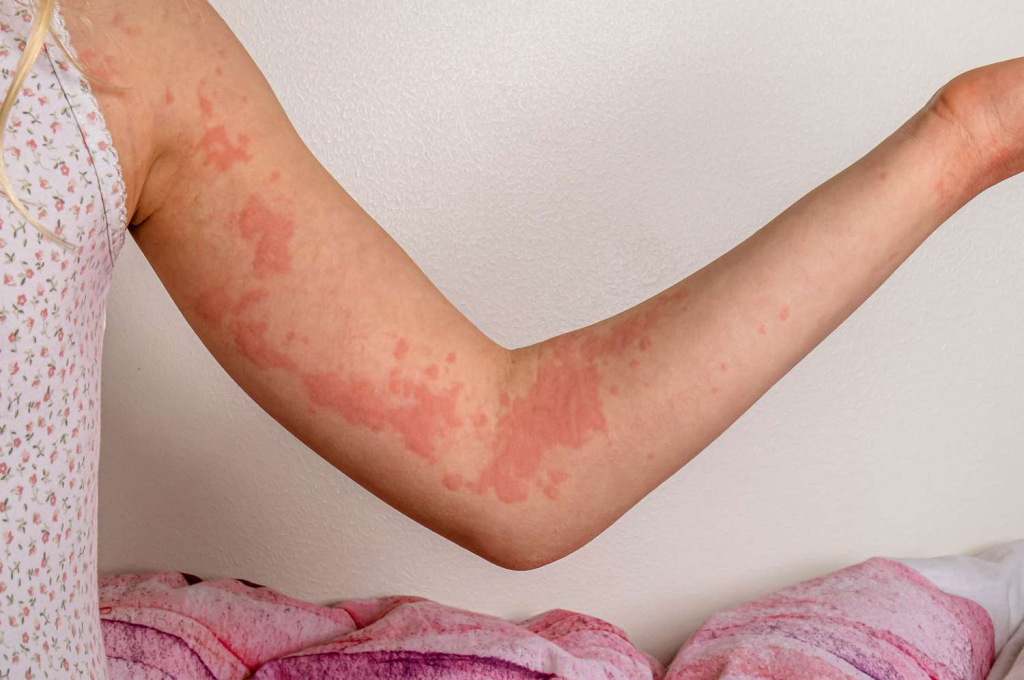
Worried About Hives? – Here Are 9 Potential Causes Of Your Skin Condition

Hives, also known as urticaria, are itchy rashes that develop on the skin. Hives can develop anywhere on the body, including the torso, legs, face, arms, and back. Some patients will have hives isolated to one area of the body, whereas others will have them spread across the entire body. The silver spring hives frequently disappear in a day or two and do not cause any life-threatening complications. However, for some people, this skin concern is a chronic condition. Understanding the common causes of hives can go a long way in helping you avoid the triggers and manage your condition. Continue reading to learn more.
1. Colds and Other Viral Infections
Sometimes, hives result from your immune system battling colds and other viral infections. These hives frequently appear at the end of the cold or virus, as you begin to feel better. Such hives are common in kids, but can still happen to anybody.
2. Bacterial Infections
Bacterial infections like a urinary tract infection or strep throat could also sometimes triggers hives as the body reacts to the bacteria. These hives will often fade away as the antibiotics assist your body in fighting the infection.
3. Chronic Conditions
Hives that last for months could be a warning sign of an autoimmune condition like type I diabetes, rheumatoid arthritis, thyroid disease, or lupus. These hives will not fade by themselves. Thus, it is important to seek an appointment to check this type of hive and determine if a chronic health issue is an underlying cause.
4. Stress
Stress can raise the body’s internal temperature and release adrenalin and other chemicals that may cause hives, especially in individuals with sensitive skin, allergies, or eczema. Stress hives commonly develop on the arms, face, chest, and neck.
5. Temperature Changes
Sudden temperature changes like entering a swimming pool or a hot shower can trigger histamine release, making hives develop. Hives that develop because of temperature changes are known as cold urticaria. An itchy and red area of skin frequently develops around these hives.
6. Tight Clothing
Tight clothing may cause friction, resulting in skin irritation and eventually hives. Besides, tight clothing pushes any bacteria on the skin surface into the pores and hair follicles, raising the likelihood of hives.
7. Exercise
When you work out, the body releases a chemical known as acetylcholine that can affect the skin cells, causing skin irritation and hives. Hives caused by exercise are also called exercise-induced urticaria. Some individuals have additional symptoms along their hives, like headaches, shortness of breath, abdominal cramps, and flushing.
8. Swelling of Blood Vessels
Swelling of the blood vessels, also called vasculitis, can lead to painful hives. These hives cause skin bruising that lasts several days. Unlike other causes of hives, vasculitis is a serious health concern that requires prompt care.
9. Medications
Some medications like opioids, antibiotics, and anti-inflammatory drugs (NSAIDs) can cause allergic reactions that result in hives. Hives after taking certain medication may be the initial warning sign of a health emergency known as anaphylaxis.
Hives are the body’s way of responding to a substance to which it is sensitive. These reactions could be uncomfortable, but they are often not severe. You might develop hives alone, or with associated symptoms like shortness of breath based on the underlying cause of your condition. In most cases, these reactions disappear in a few days. However, if you are prone to these reactions, consult your specialist for appropriate testing. Once you learn the specific triggers of your condition, you can take measures to avoid them. Your doctor will also suggest treatments to manage any associated symptoms you experience.
